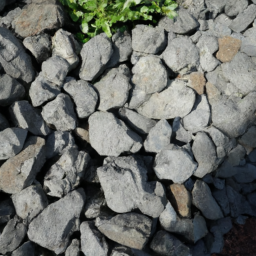Landscaping with Black Lava Rocks Transform Your Garden
Black Lava Rocks Landscaping
Black Lava Rocks Landscaping: Ideas for Sprucing Up Your Home
Do you want to inject an exotic, unique look to the exterior of your home without breaking the bank? Black lava rocks landscaping is a great option - particularly for homeowners that live in dry climates like the Southwest US or elsewhere. Here we'll explore the potential advantages of using black lava rocks in landscaping so you can decide if the cost is worth the appeal.
What Are Black Lava Rocks?
Black lava rocks are a type of igneous rock formed from a volcanic eruption. According to the U.S. Department of Agriculture's Natural Resources Conservation Service, A lava flow consists of a solidified outer surface crust, often times displaying a glassy quality, underlain by a semisolid mixture of fragmented material (juvenile) and gas bubbles, which forms the vesicular portion.
While the texture, size, and shape of the rocks varies, typically the average rock size of black lava rocks ranges from pebble- or racquetball-sized to fist-sized.
Benefits of Black Lava Rocks Landscaping
When deciding if black lava rocks landscaping is right for you, here are some of the top advantages.
Ease of Use
Unlike many other projects, building a landscape with black lava rocks is simpler and requires fewer tools. The biggest need is a good pair of work gloves to protect your hands from cuts and sharp edges, and likely a wheelbarrow or cart for transporting the rocks. No additional construction is necessary unless explicitly planning to combine things like pea gravel with the lava rocks or build edging or walkways with boards or pavers.
Dramatic Appeal
Black lava rocks possess a unique appeal because of their rough, angular shape and the deep black hue, which can bring out vibrant colors of other plants and landscaping features. The rocks can create an unforgettable accent for any green plant or water feature.
Durability and Low Maintenance
Unlike grassy or other soil areas, black lava rocks require nearly no maintenance besides occasional raking or brushing to prevent thickening. Furthermore, the rocks stand up to the test of weather condition over time. They do not require any additional treatments, and their natural black color does not show dirt or signs of wear as quickly as other surfaces, such as mulch. Finally, lava rocks do not require any form of water or fertilizer to maintain their strength and color.
Drawbacks of Black Lava Rocks Landscaping
Unfortunately, not everything is perfect in the world of black lava rocks landscaping.
Price
Lava rocks might cost more than other types landscape materials such as mulch and gravel. It depends on where you buy them, but since you are using a natural material, you can expect to pay more.
Weight
Knot the price of the rocks, you'll have to consider the weight also. Depending on where you get them, the rocks can be very heavy. The average weight is roughly 20-50 pounds per cubic foot (depending on size). That's why it's usually a good idea to enlist the help of a friend or two or invest in a wheelbarrow. If you buy them online, be aware of any additional delivery fees or surcharges.
Inconsistency
The last con you should consider is that the rocks are highly irregular in shape, size and texture, which makes it easy for the stones to move when stepped on or when a heavy object is dropped on the stones.
Brief Recap
At the end of the day, if you are looking for a unique, dramatic landscape to accent your plants and outdoor features without the bother of maintenance, black

Previous Page
